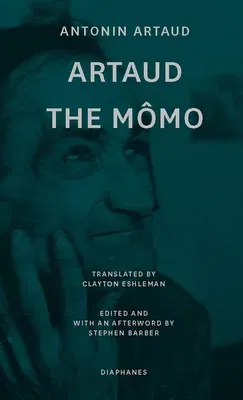Artaud the Mômo is Antonin Artaud's most extraordinary poetic work
from the brief final phase of his life, from his return to Paris in 1946
after nine years of incarceration in French psychiatric institutions to
his death in 1948. This work is an unprecedented anatomical excavation
carried through in vocal language, envisioning new gestural futures for
the human body in its splintered fragments. With black humor, Artaud
also illuminates his own status as the scorned, Marseille-born
child-fool, the "mômo" (a self-naming that fascinated Jacques Derrida in
his writings on this work). Artaud moves between extreme irreligious
obscenity and delicate evocations of his immediate corporeal perception
and his sense of solitude. The book's five-part sequence ends with
Artaud's caustic denunciation of psychiatric institutions and of the
very concept of madness itself.
This edition is translated by Clayton Eshleman, the acclaimed foremost
translator of Artaud's work. This will be the first edition since the
original 1947 publication to present the work in the spatial format
Artaud intended. It also incorporates eight original drawings by
Artaud--showing reconfigured bodies as weapons of resistance and
assault--which he selected for that edition, after having initially
attempted to persuade Pablo Picasso to collaborate with him. Additional
critical material draws on Artaud's previously unknown manuscript
letters written between 1946 and 1948 to the book's publisher, Pierre
Bordas, which give unique insights into the work from its origins to its
publication.

